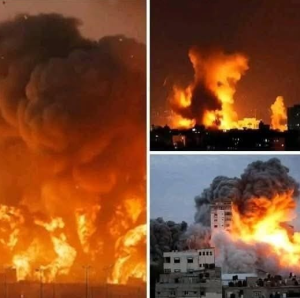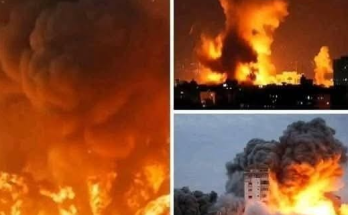
BREAKING: At Least 300 Homes Estimated Damaged or Destroyed After Large Wildfire
In a devastating news update, officials report that at least 300 homes and structures have been damaged or destroyed in a massive wildfire that swept across parts of Oklahoma. The firestorm, driven by powerful winds and unusually dry conditions, has left residents reeling—and raised urgent questions about disaster preparedness and recovery.
What Happened
Over the weekend, more than 130 wildfires ignited across 44 counties in Oklahoma, according to a post-event assessment released by Guy Carpenter, a risk-management firm. guycarp.com Strong, hurricane-force winds—reported at times between 55 and 75 mph—combined with critically low humidity and highly flammable vegetation to create “ideal conditions for rapid fire spread.” guycarp.com
The scale of destruction was immense: Guy Carpenter’s report states that over 300 structures—homes and buildings alike—were damaged or destroyed. guycarp.com In one particularly hard-hit area, the city of Stillwater lost 74 homes, according to local officials. guycarp.com
Oklahoma’s governor, Kevin Stitt, confirmed that his own farmhouse near Luther was among the homes lost in the blaze. guycarp.com+1 Two people have also died in the fires, authorities say, underscoring the deadly nature of the disaster. Politico
Why the Fire Spread So Fast
Experts say that a perfect storm of environmental factors fueled the rapid escalation and destructive potential of the wildfire:
-
High winds: Gusts reaching up to 75 mph made it difficult for fire crews to control advancing flames. guycarp.com
-
Dry vegetation: Many of the areas affected had not seen significant rain in weeks, leaving brush and grasses extremely dry and fire-prone. guycarp.com
-
Low humidity: The arid conditions increased the fire’s intensity and made it more volatile. guycarp.com
According to the assessment, the conflagration spread so widely that fire crews faced “insurmountable” challenges under such conditions. Politico
Evacuations, Rescue Efforts & Emergency Response
As the fire exploded across the state, authorities issued multiple evacuation orders. Thousands of residents were forced to flee in haste, many with little more than what they could carry. Emergency shelters were activated, and local first responders worked around the clock to rescue residents, protect property, and contain hotspots.
The Oklahoma Department of Emergency Management mobilized additional resources, coordinating with local, state, and federal agencies. Meanwhile, the Red Cross and other nonprofit disaster relief organizations set up temporary shelters to assist displaced families.
Residents Return to Devastation
In Stillwater, returning residents were met with heartbreaking scenes: homes reduced to ash, charred foundations, and neighborhoods unrecognizable from just days before. One homeowner, named in media reports as Jeremy Cook, returned to find his house completely destroyed. He described the emotional whiplash of evacuating in panic, then returning “between laughing and crying” as he surveyed his loss. Politico
Others who lost everything spoke of a surreal grief: family photographs, heirlooms, and personal belongings vanished in the fire. Some said they were still in shock, barely able to comprehend how quickly their lives changed.
Financial & Insurance Fallout
Early damage assessments suggest that the economic toll will be significant. The Guy Carpenter report highlights how widespread structural loss could trigger a long-term insurance and recovery crisis. guycarp.com
Many residents are now grappling with uncertain futures: Will their homes be rebuildable? How long will it take? What support will they receive? Insurance companies, homeowners, and disaster relief groups are already coordinating to answer those questions, but the path ahead looks long.
What’s Next
-
Recovery efforts: State and local agencies are working to provide aid to impacted families, including financial assistance, temporary housing, and emotional support.
-
Investigation: While initial reports attribute the rapid spread to weather and dry vegetation, officials are investigating whether any of the fires were caused by human activity or negligence.
-
Prevention: The scale of this disaster is prompting calls for greater investment in wildfire prevention, more aggressive forest management, and better early-warning systems.
-
Community rebuilding: As the smoke clears, residents will face the long and difficult process of rebuilding homes and lives. It remains unclear how many will choose to return permanently.
Why This Fire Matters
This blaze isn’t just a local tragedy—it’s a stark reminder of how vulnerable communities can become when weather conditions, climate factors, and wildfire risk converge. It also underscores the importance of proactive efforts to mitigate fire risk and prepare for what may be an increasing frequency of extreme fire events.
For the many Oklahoma residents who have lost their homes, this disaster marks a turning point. Their immediate needs are urgent—shelter, support, and a way forward—but the long-term implications could shape the future of how communities in fire-prone areas build, respond, and recover.

